|
Some people argue that science is too conservative and set in its ways. They claim that science favors a herd mentality where scientists are rewarded for following the mainline theories and are penalized for dissent against the establishment. It is argued that this creates a hostile environment for radical new ideas that hinders scientific progress and slows down innovation. Is this true? Let’s look at 3 of these ideas that were rejected by science but turned out to be true. 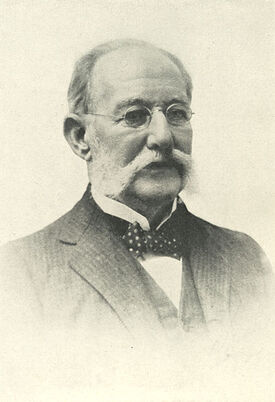 Carlos Finlay Carlos Finlay Mosquitoes transmit Yellow Fever At the end of the 19th century, diseases were considered to be transmitted through person to person contact, but the mechanisms of the transmission of diseases like Yellow Fever eluded scientists. The Cuban physician, Carlos Finlay, developed a theory that Yellow Fever was transmitted by mosquitoes, and he performed studies where he had a partial success in having some volunteers bitten by mosquitoes develop mild cases of Yellow Fever. Finlay presented this idea to the scientific community in Cuba in 1881 and later in the United States. However, Finlay’s evidence turned out to be problematic, generating many unanswered questions, and his presentation was less than stellar. His idea was met with derision and he was called a crank. For nearly 20 years he persevered in his research, which he funded himself, and continued generating stronger evidence and publishing it. During this time, the Scottish physician, Patrick Manson proposed (based on his earlier work on the transmission of a disease-causing worm by mosquitoes) in 1894 that the malaria parasite could be also be spread by these insects. A few years later the British medical doctor, Ronald Ross, proved that this was indeed the case. Towards the end of the century, Finlay’s idea started looking less farfetched and gained enough notoriety to warrant it be put to test. In 1900 Walter Reed carried out his famous experiments in Cuba that demonstrated that mosquitoes transmit Yellow Fever, and Finley was vindicated. 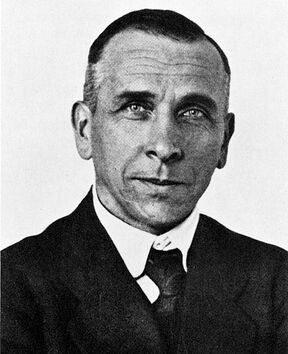 Alfred Wegener Alfred Wegener Continents Move In 1912 the German geophysicist and meteorologist, Alfred Wegener, proposed the idea that the continents of the Earth are moving away from each other, and that they were once joined together into a great landmass he called Pangea. His evidence consisted of how the shape of the continents could be made to fit together like pieces of a puzzle, the distribution of both current and fossil species across continents, and how the geological strata in one continent matched those of others. Unfortunately, not only did Wegener lack a credible mechanism to explain this proposed continental movement, but he made several mistakes including overestimating the rates of movement. His idea of continental drift was panned by the scientific establishment and labelled a “fantasy” and “pseudoscience”, and he was publicly ridiculed. Through all this, Wegener persevered, refining his ideas and correcting his mistakes. However, it was only in the 1950s and 1960s with the advent of the new science of paleomagnetism, that numerous studies demonstrated that the seafloor indeed was spreading and that the continents were moving. Sadly, Wegener died during an expedition to Greenland in 1930 and did not live to see his idea incorporated into the modern theory of plate tectonics. Today the movement of continents can be measured with satellites. 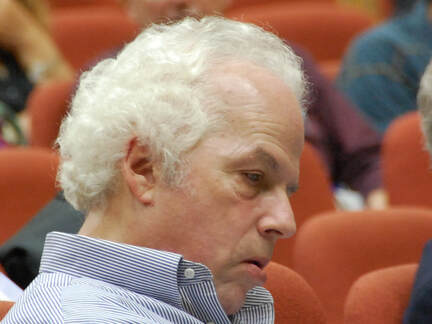 Stanley Prusiner Stanley Prusiner An infectious Agent with no DNA or RNA There are diseases such as Creutzfeldt-Jakob disease or kuru that back in the 1970s were thought to be caused by viruses that act very slowly. The American neurologist and biochemist, Stanley Prusiner, became interested in these slow virus diseases and managed to isolate pure preparations of the infectious agent. Prusiner found that these preparations contained protein but were devoid of nucleic acids (nucleic acids such as DNA and RNA carry the genetic information in all living things including viruses), and that agents that destroyed proteins but not nucleic acids eliminated the infectivity of the preparations. Therefore Prusiner concluded, based only on this evidence, that the infectious agent was a new infectious entity made up solely of protein. He proceeded to publish an article where he not only claimed to have discovered a new infectious agent unlike any found before, but he also christened this agent, prion, a name put together from the words “proteinaceous” and “infective “ (although “proteinaceous” and “infective” should yield “proin”, “prion” sounded better). The vast majority of scientists did not accept his idea, which at the time went against everything that was known about the nature of infectious agents, and a good number of them heaped vitriol upon Prusiner. The fact that Prusiner was a stellar networker and salesman of his ideas and managed to get multimillion dollar grants did not soften their attitude. Although Prusiner kept researching and making new discoveries about prions, experiments in this field used to take years, so scientists were slow to try to reproduce his experiments. Eventually others were able to replicate his results and the concept of prions was accepted. Prusiner won the Nobel Prize in 1997. Now let's go back to our question. Does science create a hostile environment for radical new ideas that hinders scientific progress and slows down innovation? Two things have to be understood about radical new ideas in science: 1) the majority of radical new ideas turn out to be wrong, and 2) there is usually not one or two of these radical new ideas but dozens of them. Which ones are correct and which ones aren't? Should the limited funds allocated for science be made available to everyone who has a radical new idea? The answer is, of course, No. Decisions have to be made as to which ideas are more plausible than others. Science tends to give preeminence to that which is established. If you want to upend established science, the burden of proof is on you. The truth is that the radical news ideas of Finlay, Wegener, and Prusiner were not backed by convincing evidence. Their evidence generated more questions than answers, and scientists were not moved to throw orthodoxy out the window, at least right away. The insults and humiliations that Finley, Wegener, and Prusiner endured are certainly regrettable and objectionable, but this has to do more with human nature than with science. However, as more and better evidence was generated, questions were answered, errors were corrected, and experimental results were replicated, their ideas were accepted. They were right, and the establishment was wrong. But let’s be clear on something, the initial rejection of their ideas was totally warranted, even if they did turn out to be true. The photos of Carlos Finlay and Stanley Prusiner, and the photo of Alfred Wegener from the Bildarchiv Foto Marburg are all in the public domain.
8 Comments
I have tried to explain in my blog how scientific theories arise, and how the initial theories generated in an emerging scientific field are very different from the fully developed theories of a mature scientific field. In this post I will attempt to do this again using the ancient parable of the blind men and the elephant. This is a story found in Hindu and Buddhist texts dating back more than 3,000 years. It has been used in religious and philosophical contexts to illustrate how we often think we know the truth, even though we have just grasped only part of it. The most famous version in English is the poem entitled “The Blind Men and the Elephant” written by the poet John Godfrey Saxe. So let’s imagine a physical reality which in our case has the shape of an elephant, and that we will call “the elephant”. Let’s also imagine an emerging scientific field that is trying to research said elephant. The field is represented by six scientists who seek to figure out how the elephant looks. But the scientists are in the dark as shown by the blindfolds they are wearing. So each of these scientists approaches the elephant and begins to research it. In our story this is exemplified by the scientists touching the elephant. Scientist 1 grabs the elephant by the tail and puts forward the hypothesis that the elephant is like a rope. Scientist 2 touches the elephant’s leg and puts forward the hypothesis that the elephant is like a tree. Scientist 3 touches the side of the elephant and puts forward the hypothesis that the elephant is like a wall. Scientist 4 touches the ears of the elephant and puts forward the hypothesis that the elephant is like a fan. Scientist 5 grabs the tusk of the elephant and puts forward the hypothesis that the elephant is like a spear. Scientist 6 feels the moving trunk of the elephant and puts forward the hypothesis that the elephant is like a snake. In the various versions of the parable, the blind men quarrel with each other, as each is one is convinced that their version of what the elephant looks like is the truth. The parable ends mocking their hubris at thinking that each one knows the truth when really none of them knows the whole truth (the real shape of the elephant). However, there is one fundamental difference between these versions of the parable and mine. In my version, the blind men are scientists, and that makes all the difference! These scientists are not working in isolation. They discuss and cooperate with each other. Mind you, some of these scientists may argue very forcefully in favor of their particular idea of how the elephant looks, and others may argue back just as forcefully that they are wrong. However, these scientists go to meetings, give presentations, face each other, exchange information, and publish their research results regarding the shape of the elephant in peer-reviewed journals. Each scientist tries to reproduce the observations made by others. The scientist who touched the tail and concluded that the elephant was like a rope, also touches the leg of the elephant, and realizes that he should modify his original hypothesis to incorporate this new information. Thus he proposes that the elephant looks like a tree with a rope sticking out of it. The scientist who touched the side of the elephant and concluded that the elephant was like a wall, also touches the ear, and realizes he should modify his original hypothesis to include this information. He now proposes that the elephant looks like a wall with a fan sticking out of it. The same happens with the other scientists. As new information becomes available, scientists modify their original views and try to harmonize all the knowledge about the elephant. Mind you, this can be a messy process that may be hampered by methodological difficulties. For example, some scientists may not reach high enough to touch the ear, or may not be nimble enough to catch the tail and they remain unconvinced of claims that the elephant is like a fan or a rope. Nevertheless, after a period of time, a majority of these scientists come to an agreement and put out the first theory regarding how the elephant looks! 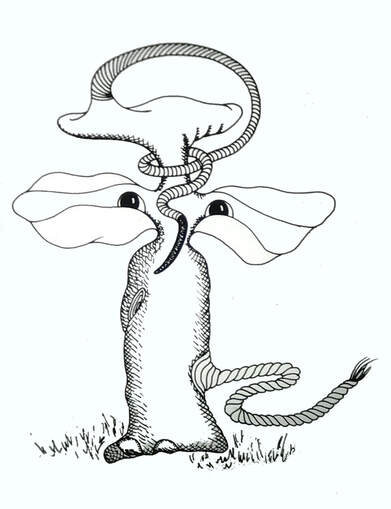 The First Theory The First Theory As you can see from the image, this theory about how the elephant looks is a very preliminary one. However, there is something “elephant-like” about it. Clearly the theory has grasped some aspects of the reality the scientists were studying. In its present form the theory may even have some usefulness, but the theory is clearly incomplete. It does not reflect the full reality of how the elephant looks. Nevertheless, this theory represents a group effort. The scientists are trying to fit all the relevant information that is available to come up with the answers. So the research continues. A scientist may find that the elephant has not one leg but four. The scientist reasons, “Hmm, the elephant is like four trees? That doesn’t make sense.” Another may find that the surface of the wall is much larger and is connected to the four legs at the bottom and completely surrounds the elephant at the middle. He may think, “What type of wall is this? The elephant may not be like a wall after all.” As more observations keep piling in, the original theory is found to be unsatisfactory and is replaced by one that incorporates the new observations. This new theory is more complete and its image would look more like an elephant. Scientists develop new methods to investigate the shape of the elephant generating more information. Scientists from other disciplines may also take up the research of how the elephant looks bringing in their expertise and new ideas. As this process keeps going and the scientific field that studies the elephant reaches maturity, a theory is put forward that explains the majority of the observations regarding how the elephant looks. The theory is used to make predictions that turn out to be true and generates practical applications. The scientists stop arguing with each other regarding the most relevant aspects of what the elephant looks like, and they reach a consensus. Thus something has happened that has never happened in any of the previous versions of the parable. The scientists studying the elephant don’t have their blindfolds on anymore. They are able to behold the true shape of the elephant. By working together, exchanging information, trying to reproduce what others did, and trying to come up with explanations for all the observations, they have discovered the truth! That is how science works. The images by Paula Bensadoun can only be used by permission from the author. 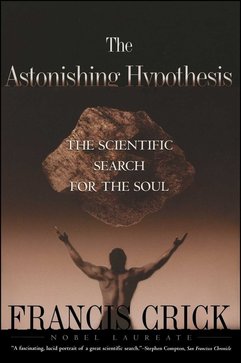 In his excellent 1994 book, The Astonishing Hypothesis, the late Nobel Prize winning scientist, Francis Crick (co-discovered of the structure of DNA with James Watson), put forward a hypothesis that boggles the mind. He wrote: “You, your joys and your sorrows, your memories and your ambitions, your sense of personal identity and free will, are in fact no more than the behavior of a vast assembly of nerve cells and their associated molecules.” He claimed that this hypothesis is astonishing because it is alien to the ideas of most people. This is presumably because, when it comes to our mind, we believe that there is something special about it. Clearly the mind is more than the product of the activity of billions of cells, no? Exalted emotions such as love and compassion and empathy or belief in the divinity or free will cannot just be a byproduct of chemical reactions and electrical impulses, right? But why would that be the case? Consider an organ like the intestine. It’s made up of billions of cells that cooperate to produce digestion. Most people will agree with the notion that the intestine produces digestion. So, if we can accept that the cells that make up the intestine produce digestion, why can’t we accept that the cells that make up the brain produce the mind? Let’s just touch on something simple, but that nevertheless goes to the very core of our notions of free will and consciousness. Consider an action such as performing the spontaneous motor task of moving a finger to push a button. In our minds we would expect that this and other such actions entail the following sequence of events in the order specified below: 1) We become aware (conscious) that we want to perform the action. 2) We perform the action. But what goes on in our brains even before we become aware that we want to perform the action? Many people would guess: nothing. Whatever brain activity occurs associated with the action must logically occur after we become aware that we are going to perform the action. After all, how could there possibly be nerve activity associated with an action that we are not even yet aware that we want to perform? Warning! Warning! - Insert blaring alarms and rotating red lights here - Fasten your existential seat belts because this ride is about to get bumpy! In 1983 a team of researchers led by Dr. Benjamin Libet carried out a now famous experiment to evaluate this question. The researchers recorded the electrical activity in the brains of test subjects which were asked to perform a motor task in a spontaneous fashion, and they also asked the subjects to record the time at which they became aware that they wanted to perform the task. The surprising result of the experiment was that, while the awareness of wanting to perform the task preceded the actual task as expected, the electrical cerebral activity associated with the motor task performed by the subjects preceded by several hundred milliseconds the reported awareness of wanting to perform the task! This amazing experimental result has been replicated by other researchers employing different methodologies. One study employing magnetic resonance to image brain activity stablished not only that the brain activity associated with the task is detected in some brain centers up to 7 seconds before the subject becomes aware of wanting to perform the action, but also that decisions based on choosing between 2 tasks could be predicted from the brain imaging information with an accuracy significantly above chance (60%). Delving even deeper into the brain, another group of researchers recorded electrical activity from hundreds of single neurons in the brains of several subjects performing tasks and found that these neurons changed their firing rate and were recruited to participate in generating actions more than one second before the subjects reported deciding to perform the action. The researchers could predict with 80% accuracy the impending decision to perform a task, and they concluded that volition emerges only after the firing rate of the assembly of neurons crosses a threshold.  The interpretations of these types of experimental results have triggered a debate that is still ongoing. The most unsettling interpretation is that there is no free will (i.e. your brain decides what you are going to do before you even become aware you want to do it). However, there are many critics that claim that there are technical flaws in the experiments, that the data is being overinterpreted, that the electrical activity detected is merely preparative with no significant information about the task, or that it is a stretch to extrapolate from a simple motor task to other decisions we make that are orders of magnitude more complex. In any case the question of whether free will exists is in my opinion irrelevant because our society cannot function under the premise that it doesn’t. What interests me from the point of view of the astounding hypothesis, is the possibility that the awareness of wanting to perform an action before we perform it is merely an illusion created by the brain. This notion is not farfetched. As I explained in an earlier post, the brain creates internal illusions for us that we employ to interact with reality. Colors are not “real”, what is real is the wavelength of the light that hits our eyes. What we perceive as “color” is merely an internal representation of an outside reality (wavelength). The same goes for the rest of our senses. As long as there is a correspondence between reality and what is perceived, what is perceived does not have to be a true (veridical) representation of said reality. Consider your computer screen. It allows you to create files, edit them, move them around, save them or delete them. However, the true physical (veridical) representation of what goes on in the computer hard drive when you work with files is nowhere near what you see on your screen. This is so much so, that some IT professionals refer to the computer screen as the “user illusion”. So, much in the same way that the brain creates useful illusions like colors that allow us to interact with the reality that light has wavelengths, or the computer geeks create user illusions (file icons) that allow us to interact with the hard drive, could it be that the awareness of wanting to perform actions, in other words, becoming conscious of wanting to do something, is just merely an illusion that the brain creates for the mind to operate efficiently? We are still in the infancy of attempts to answer these questions, but what is undeniable is that the evidence indicates that there is substantial brain activity taking place before we perform actions that we are not even yet aware we wish to perform, and that this brain activity contains a certain degree of information regarding the nature of these actions. As our brain imaging technology and our capacity to analyze the data gets better, will we be able to predict with certainty what decision a person will make just by examining their brain activity before they become aware they want to make the decision? It’s too early to tell, but from my vantage point it seems that so far Crick’s astonishing hypothesis is looking more and more plausible. The image of the cover of the book The Astonishing Hypothesis is copyrighted and used here under the legal doctrine of Fair Use. The Free Will image by Nick Youngson is used here under an Attribution-ShareAlike 3.0 Unported (CC BY-SA 3.0) license. 12/10/2017 Can anyone be a Scientist? The Most Crucial and Difficult Step of the Scientific MethodRead Now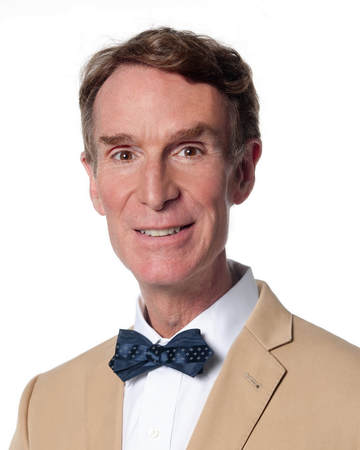 I have read some critical comments about Bill Nye the Science Guy. The comments essentially stated that Bill Nye is not a real scientist because he doesn’t have a Ph.D., just a B.S. in mechanical engineering. This is a common belief I find among people who have not pursued a scientific career. These people think that to be scientists, and think like scientists, you need decades of study and work in labs or in the field operating expensive pieces of equipment and researching some important things. These beliefs are wrong. Not only is Bill Nye a true scientist, but also you can be one too even if you have not pursued a scientific career.
The only thing you need to do to be a scientist is to follow the scientific method when answering questions. And what questions am I talking about? They don’t have to be complicated questions regarding the inner workings of genes, the cure for a disease, how stars explode, or how to classify fossils. The questions can be very simple, but they have to be scientific. In fact that is the first step of the scientific method: Step 1: Ask a scientific question. Scientific questions are those that pertain to the behavior of matter and energy in the world around us. Questions that cannot generate testable answers are not scientific questions. Examples of scientific and non-scientific questions: “Does God exist?” is not a scientific question because there is no way to test it, but “How many people believe God exists?” or “How has the belief in God affected society?” are scientific questions, because people can be polled and the effects of believing in a God can be evaluated. “Is killing wrong?” is not a scientific question because it involves a value judgement that also often depends on the situation, but “How many people think killing is wrong and in which situations?” is a scientific question. “Is this lake big?” is not a scientific question because terms such as “lake” or “big” mean different things to different people, but “What is the area (or volume) occupied by this body of water and how does it compare to others?” is a scientific question. Other examples of scientific questions are: “Can plants grow under green light?”, “Do ice cubes melt slower in salt water?”, “Does the size of a gummy bear affect how fast it will melt in a microwave oven?”, etc. Once you have asked a scientific question, you have to propose a possible answer to said question (a hypothesis). But before you proceed to the next step, you should try to check whether your question has been answered by someone else somewhere. Examine their methodology and their conclusions to see if you agree with them. Step 2: Propose an answer (a hypothesis) to your question. The key thing to remember here is that the hypothesis that you propose has to be falsifiable. This means that if your hypothesis is false, you have to be able to demonstrate that that indeed is the case. An example of a non-falsifiable hypothesis is: Wood floats and steel sinks because wood has more “floatability” than steel. Here “flotability” is just a restatement of the very effect we are trying to explain. A falsifiable hypothesis would be: Steel sinks because it is denser than water and wood floats because it is less dense. Here density (weight divided by volume) is a quantity that can be measured and modified to evaluate the hypothesis. Step 3: Devise a way to test these scientific hypotheses through observation or experiments. The best experiments or observations are those that provide a yes or no answer. If there are several variables that can affect the results of your experiment, you have to control them before any meaningful results can be obtained. This is why scientists often use “controls” in their experiments. For example, if you are trying to figure out at what temperature a liquid will boil, you also have to be mindful of the pressure at which you are heating it and the content of other substances dissolved in the liquid. Water will boil at different temperatures on a mountain compared to sea level. Salt water will boil at a different temperature than fresh water. Also be mindful of your biases! If you feel very strongly about the hypothesis that you are testing, you should probably ask someone else to perform the experiment or the observations for you to avoid experimenter or observer bias. Step 4: Evaluate the results of your experiment or the observations you made and reach a conclusion. Try to be razor sharp in your conclusion. The hypothesis is either true or false. Do not fall in love with a hypothesis. Unless there was a mistake in the measurements or observations, or new knowledge became available that would have affected your procedures, if a hypothesis proven false, it is false. Do not move the goalposts! This is what pseudoscientists do when their pet explanations are proven false over and over. Most people who write about the scientific method stop at step 4, but in my opinion, one more step is required. This step is the most crucial and most difficult, and also the reason I consider Bill Nye to be more of a scientist than many scientists even if he doesn’t have a Ph.D. Step 5: Being a scientist is not merely applying the scientific method a few times or applying it selectively to some things and not to others. Being a scientist means incorporating this method into your daily life, into the way you think, into the way you select which beliefs to hold, and in fact into your very world view. You will be surprised to learn that quite a number of scientists (all with a Ph.D.) that apply the scientific method on a regular basis to their research at work are incapable of applying it to aspects of their personal lives or even their beliefs. I have met scientists who believe in creationism, astrology, bogus alternative therapies, and many other things that have been tested and disproven. And the irony is that many of the scientific principles that have been used to demonstrate that these things are false are the same principles that these scientists apply in their labs in their experiments! Such is the complexity of the human mind. This is why I believe Mr. Nye is a real scientist, and why you can be one too. Now get out there and be a scientist! Photo of Bill Nye photo by Paul Antico, SFU - University Communications, Attribution 2.0 Generic (CC BY 2.0) license. |
Details
Categories
All
Archives
June 2024
|
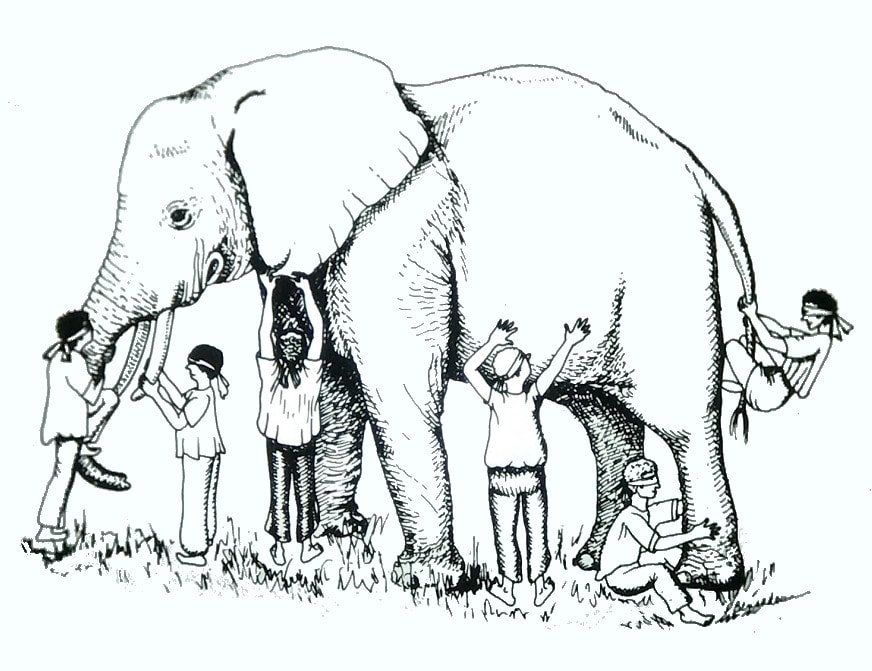
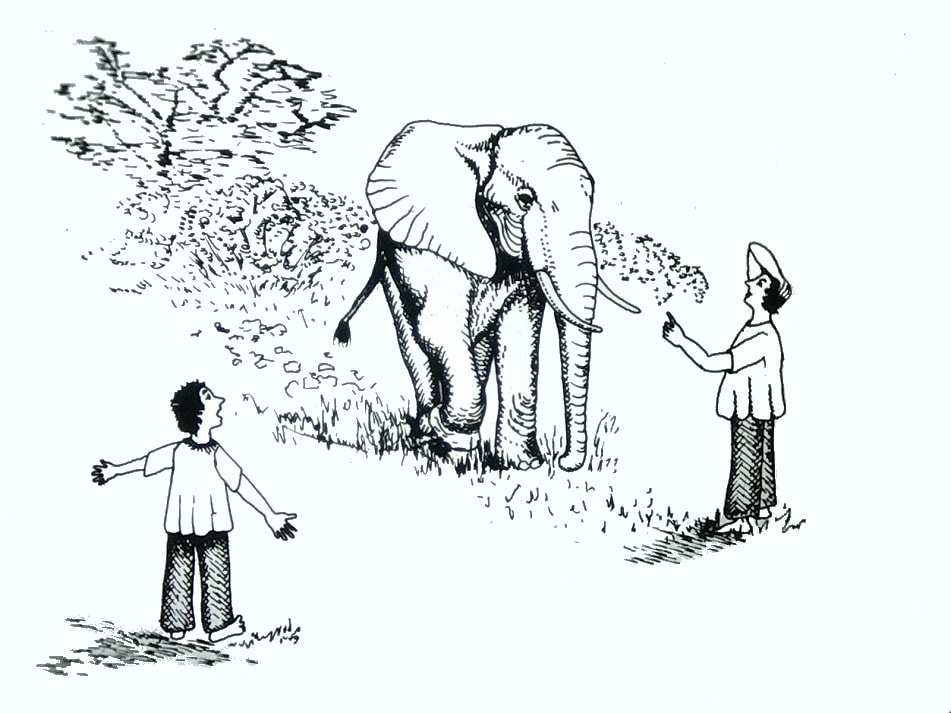
 RSS Feed
RSS Feed